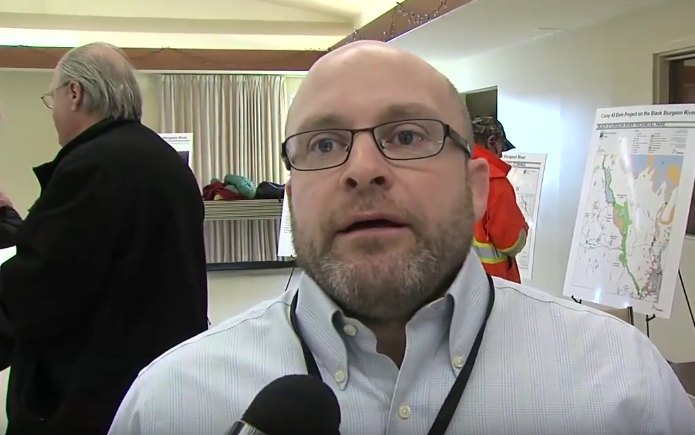THUNDER BAY -- A controversial proposal to partially remove a dam on the Black Sturgeon River continues to cause a lot of debate among anglers and scientists.
The Ministry of Natural Resources recently held a pair of open houses on the issue in Thunder Bay and Nipigon and the public has until March 10 to provide comment on the four options.
The dam on the Black Sturgeon River was built around 1960 for logging purposes, and played a role in keeping the sea lamprey population down in Lake Superior.
However, it also cut off spawning areas for other fish, causing the population of pickerel and lake sturgeon to plummet.
The 53-metre-long dam no longer meets safety requirements, and the MNR has been studying the options and collecting feedback since 2012.
The preferred, option, according to a study by KGS Consultants, is to remove the concrete aprons from the dam, and open up the river to spawning.
“The benefits to removing the damn are allowing fish access to that additional 70 kilometres of habitat as well as additional spawning habitat,” said Tony Gallo, KGS Consulting environmental scientist.
But the major downside, according to the Northshore Steelhead Association, is the potential for invasive sea lamprey to take over the river, and greatly increase the population of the parasitic fish in Lake Superior.
Northshore Steelhead Association vice president Terry Kosolowski said they are concerned with the amount of production the lampreys will have.
“This will open much more spawning grounds for the sea lamprey, so we are kind of concerned about that and we would like to see those issues alleviated before we move forward,” said Kosolowski.
Gallo said this is a legitimate concern.
“The sea lamprey will go up and they will spawn and then they will spend some time in the river, between five and seven years, and then they will go downstream,” Gallo said.
“That’s when they become the parasitic phase and they will spend about a year in Lake Superior and that’s when they will feed on the fish.”
The option preferred by KGS does include the construction of a multipurpose lamprey barrier farther upstream, and the use of lampricide, but the Steel association says that chemical can affect other fish populations.
The other options include fixing the dam and leaving things as is or the province could set up a trap and sort facility, or a netting operating, where walleye and lake sturgeon are caught and transported north of the dam to spawn.
The full report is available for public viewing at the Waverley and Brodie libraries and at the Nipigon library.
The final environmental study report is expected to be complete near the end of 2017.
(TBT News)
